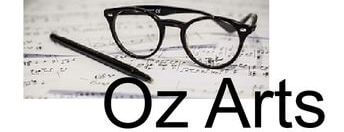UCLA Philharmonia cond. Neal Stulberg
Antonio Lysy (cello)
Yarlung Records 96820
reviewed by Neville Cohn
During intermission at a recent concert, I asked a number of people at random if they knew who Eric Zeisl was. Two looked at me blankly and shrugged their shoulders, saying they’d never before heard the name. Another thought he had something to do with the Bauhaus Movement – and one wondered if he was a research scientist. No-one got it right – and for this reason alone, this compact disc is timely and certainly worth listening to.
 Quite apart from his credentials as a composer, Zeisl was connected to Arnold Schoenberg via the marriage of his daughter Barbara to Ronald, Schoenberg’s son.
Quite apart from his credentials as a composer, Zeisl was connected to Arnold Schoenberg via the marriage of his daughter Barbara to Ronald, Schoenberg’s son.
(As is increasingly known these days, Barbara and Ronald’s son E. Randol Schoenberg is an attorney specialising in the recovery of art works stolen by the nazis. His most celebrated case relates, inter alia, to the famous painting The Woman in Gold by Gustav Klimt which inspired a recent movie in which Helen Mirren portrays Maria Altmann, the legal owner who, in spite of the Austrian government’s determination not to give up its ill gotten gains, secured, as a result of Randol’s powerful advocacy, the return to her of the Klimt portrait.)
Despite a good familial relationship between the two composers, Zeisl and Schoenberg inhabited strikingly different aesthetic and philosophical worlds. Schoenberg’s music rocked the-then musical establishment and for decades afterwards. Although most of Schoenberg’s works have been recorded, this is far from the case in relation to Zeisl’s ouvre. So this compact disc is invaluable. It will bring to a new generation an appreciation of music that needs to be far better known.
Zeisl’s Kleine Sinfonie ‘after pictures of Roswitha Bitterlich’ makes for gripping listening. Bitterlich, now in her nineties and living in Brazil, was extraordinarily precocious, a mere 14 years old at the time of creating the four paintings which so inspired Zeisl. In fact, after viewing them for the first time, he hurried home and got down to work, completing the four-movement work, based on the four paintings, in four days!
Perhaps this accounts, if only in part, for the vividness of the music which doesn’t so much attract the attention as seize it.
Its first movement – The Madman – is couched in harsh, abrasive terms, radiating a sense of disorder, urgency and conflict. Much of it could be thought of as a gritty, in-your-face march macabre – and conductor Neal Stulberg takes the young players of the UCLA Philharmonia through a riveting reading. There is as well a sad, romantic violin melody.
Fascinating liner notes include images of three of the four Bitterlich paintings which inspired the first three movements; this visual prompt makes a real difference in a first encounter with the music. I’d have liked to see, as well, an image of Expulsion of the Saints which inspired the finale.
Bitterlich’s Dead Sinners inspired Zeisl to write music that eerily suggest lost, hapless souls in torment and Neal Stulberg takes the UCLA Philharmonia impressively through its doom-laden measures. And trombone and horn give point and meaning to the picture showing two mourners gorging themselves with food and liquor at a wake.
And in the final movement, the players do wonders in focussing on Zeisl’s many evocations of spiritual anguish.
 Zeisl’s Concerto Grosso has about it the sonic aura one associates with, say, some of Ernest Bloch’s Hebraic-themed works – or a soundtrack one might associate with a Cecil B. DeMille biblical epic. As well, there’s the occasional grating dissonance that sets the teeth on edge. Throughout, Antonio Lysy is in impressive form, the solo line beautifully shaped and confidently stated, his bowing a model of its kind. Certainly, both soloist and UCLA Philharmonia respond to Neal Stulberg’s direction in a consistently meaningful way. Horns are especially fine.
Zeisl’s Concerto Grosso has about it the sonic aura one associates with, say, some of Ernest Bloch’s Hebraic-themed works – or a soundtrack one might associate with a Cecil B. DeMille biblical epic. As well, there’s the occasional grating dissonance that sets the teeth on edge. Throughout, Antonio Lysy is in impressive form, the solo line beautifully shaped and confidently stated, his bowing a model of its kind. Certainly, both soloist and UCLA Philharmonia respond to Neal Stulberg’s direction in a consistently meaningful way. Horns are especially fine.
Whether articulating the nimble, darting utterances that make of the central scherzo a rather wild and perhaps drunken dance – or articulating the variations that comprise the finale with complete mastery – it’s clear that all concerned are at the top of their game. Zeisl reserves some of his most satisfying ideas for the variations which are
the sonic equivalent of the contents of an Ali Baba’s cave.
Sadly, Zeisl never heard his Concerto Grosso which he wrote in 1955/1956; it was dedicated to Gregor Piatigorsky. Its first airing was at the Zeisl Memorial Concert in 1959 in Los Angeles. Thereafter, it returned once more to limbo until 2012 when it was the prime work at a concert described as a Celebration of Eric Zeisl concert.
I hope this fine recording is heard by many. It certainly deserves to be.




